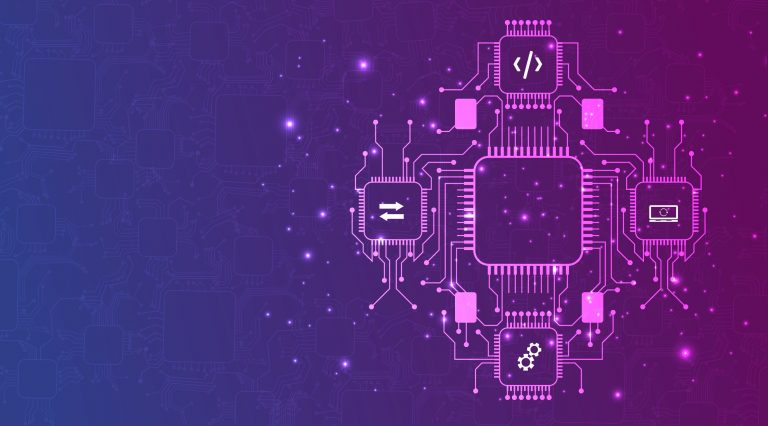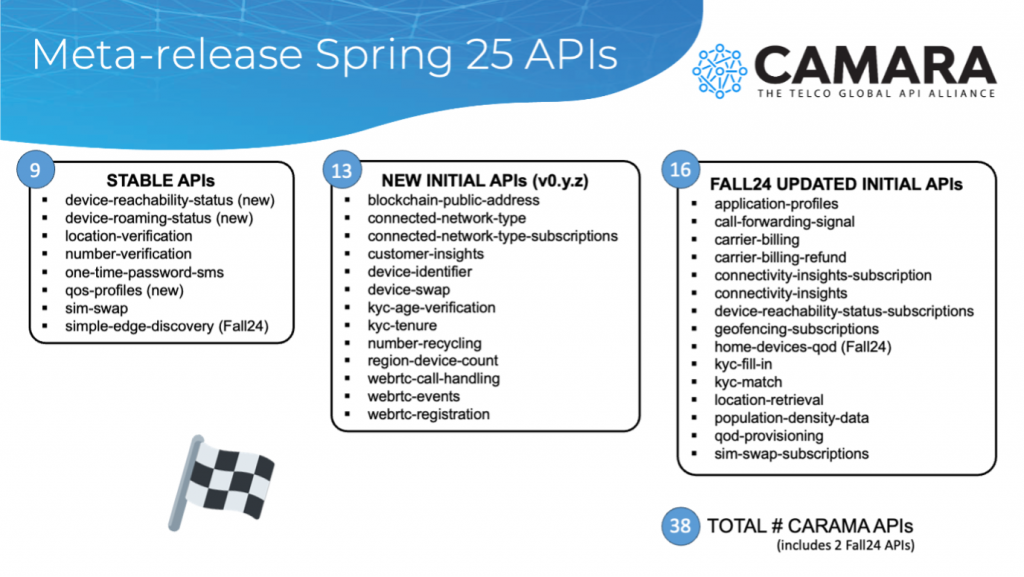Network as a Service
Open-Source Network APIs Advance With Latest CAMARA Meta-Release

Key Points
- A new release from the Linux Foundation’s CAMARA project includes 38 APIs, further helping bridge the gap between network operators and application developers.
- CableLabs contributions fall within our ongoing work to develop Network as a Service, a standardized solution for connecting applications to network services.
Last year, we shared how CableLabs is transforming networks through open-source API solutions as part of our work in the CAMARA project. Today, we’re excited to highlight the progress made in CAMARA’s newly published spring 2025 meta-release. The new release includes significant updates across CAMARA’s expanding suite of open network APIs — and spotlights CableLabs’ continued contributions to this global effort.
We actively contribute to the open-source project, which is hosted by Linux Foundation, to drive the development of new APIs and help advance industry alignment. These contributions are all part of CableLabs’ work on Network as a Service (NaaS), which allows network operators to expose previously unavailable features to application developers via open-source APIs. Other contributors to CAMARA include network operators — both wired and mobile — as well as application developers and hardware vendors.
Through this open-source approach, CAMARA aims to ultimately improve the performance of applications across all types of networks — a win for the entire industry.
What's New in CAMARA's Spring 2025 Meta-Release?
CAMARA’s spring 2025 meta-release marks a major milestone for the project, boasting 38 APIs — 9 stable APIs, plus 13 new and 16 updated APIs. The project continues to grow in momentum and industry adoption, bridging the gap between network operators and application developers through a common set of open APIs.
Here are some of the highlights from the Spring25 release that multiple service operators (MSOs) should have on their radar:
- Quality on Demand (QoD) with advanced quality of service (QoS) profile support, including Low Latency Low Loss Scalable Throughput (L4S)
- Continued enhancements to Edge Cloud, Connectivity Insights and Network Access Management APIs
- Creation of Session Insights sandbox API repository, which will enable real-time visibility into device behavior and network sessions from application to network operator. This was previously called Quality by Design and is now called Session Insights at CAMARA.
You can explore the full scope of the spring 2025 meta-release on the CAMARA wiki or read the Linux Foundation’s summary.
This spring release is the first of two planned for this year. After being released by CAMARA, APIs are available for anyone to download and use. The fall 2025 meta-release is currently in the planning phase.
Here’s a look at the timeline for the upcoming fall release:
- End of April: Scope finalized
- June: Code ready for testing
- July/August: Testing and defect fixing
- September: Official release targeted
Get Involved
Read more about the CAMARA open-source project on its website and join the project on GitHub. If you are a CableLabs member or part of our vendor community, you can join the Network as a Service working group. Member operators can also learn more by visiting our recently updated Member Portal, which requires a CableLabs account for log-in.
Let's help drive the industry forward together!
Network as a Service
CAMARA and CableLabs: Transforming Networks With Open-Source API Solutions

Key Points
- CableLabs’ contributions to the CAMARA project align with the GSMA Open Gateway Initiative, ensuring the standardization of open source APIs.
- Network as a Service, a focus area within CableLabs’ Technology Vision, includes the development of Quality by Design and Quality on Demand APIs.
- Open source collaboration on network APIs will drive the industry forward.
CableLabs is at the forefront of innovation for the broadband industry. One new area where this is especially true is in our work developing Network as a Service (NaaS) APIs. As part of this initiative, CableLabs actively contributes to CAMARA, an open source project hosted by Linux Foundation.
All of CableLabs’ contributions to CAMARA are part of our NaaS initiative. NaaS allows network operators to expose previously unavailable features to application developers via open source APIs. Alignment with the industry means CableLabs can not only utilize open source APIs, but we can help drive new APIs and adoption from multiple network operators.
The end goal is straightforward: Creating happier end users by making applications perform better across all types of networks.
What Is CAMARA, and Who Contributes to It?
CAMARA focuses on defining, developing and testing APIs that allow interaction with a service provider's network. The project is closely aligned with the GSMA Open Gateway Initiative for the development, publishing and testing of these open source APIs.
Contributors to the CAMARA community include network operators, mobile carriers and application developers. CAMARA aims to simplify APIs that interact with a service provider by abstracting the complexity of the network away. This allows developers to create applications that interact with a service provider's network without needing to understand which access network is being used or the inner workings and complexities of a mobile, PON or DOCSIS®️ networks.
Rather than develop solutions for our members in a silo, by contributing to CAMARA, CableLabs helps provide a path to adoption across a broader ecosystem. CAMARA’s open source approach enables rapid development of network-based APIs for companies within the industry.
CableLabs’ Contributions to CAMARA APIs
The CAMARA APIs align with the work that CableLabs is doing to help improve networks and make APIs more accessible to a broader range of developers, both within and outside a network operator.
Quality on Demand APIs: CableLabs contributes to multiple CAMARA projects, starting with expanding the CAMARA Quality on Demand (QoD) APIs to include the QoS profile. This allows an application to set target minimum thresholds for network performance including throughput, latency, packet loss and jitter. You can read more about this in our QoD blog post.
Network Access Management APIs: The CAMARA Network Access Management APIs are also something that CableLabs contributes to. These APIs allow for an application to interact with network operator-provided equipment in the home. The initial scope of the Network Access Management APIs is to allow actions such as rebooting a device or managing a Wi-Fi network.
Edge Cloud: CableLabs also contributes to CAMARA’s Edge Cloud project. This project allows for customers to discover the closest edge cloud zone to a given device for improved application performance.
Quality by Design: Working closely with the Connectivity Insights group at CAMARA, CableLabs is developing a new API that takes Quality on Demand a step further. Quality by Design (QbD) defines network requirements and enables an application to communicate its network KPIs — throughput, latency, jitter, packet loss — to a network operator. The network operator can then determine the cause of the network performance issues and suggest corrective action.
How Do CAMARA APIs Become Available?
Twice a year, CAMARA rolls up all of these API projects into what it calls a meta-release. The fall 2024 meta-release — the first from CAMARA — is now available.
Although the next meta-release isn’t planned until spring 2025, contributions to CAMARA are ongoing. In fact, APIs are even released between meta-releases. CableLabs’ QbD API, which didn’t make the fall release, is expected in the coming months. At that point, it will be tagged at a certain version to also be included in the spring 2025 meta-release.
Once released, APIs are available for anyone to download and use immediately.
Engage With Us on CAMARA Projects
Read more about the CAMARA open source project on their website and join the project on GitHub. If you are a CableLabs member or vendor, you can also join the Network as a Service (NaaS) working group. The more who contribute, the better the industry gets as a whole.





